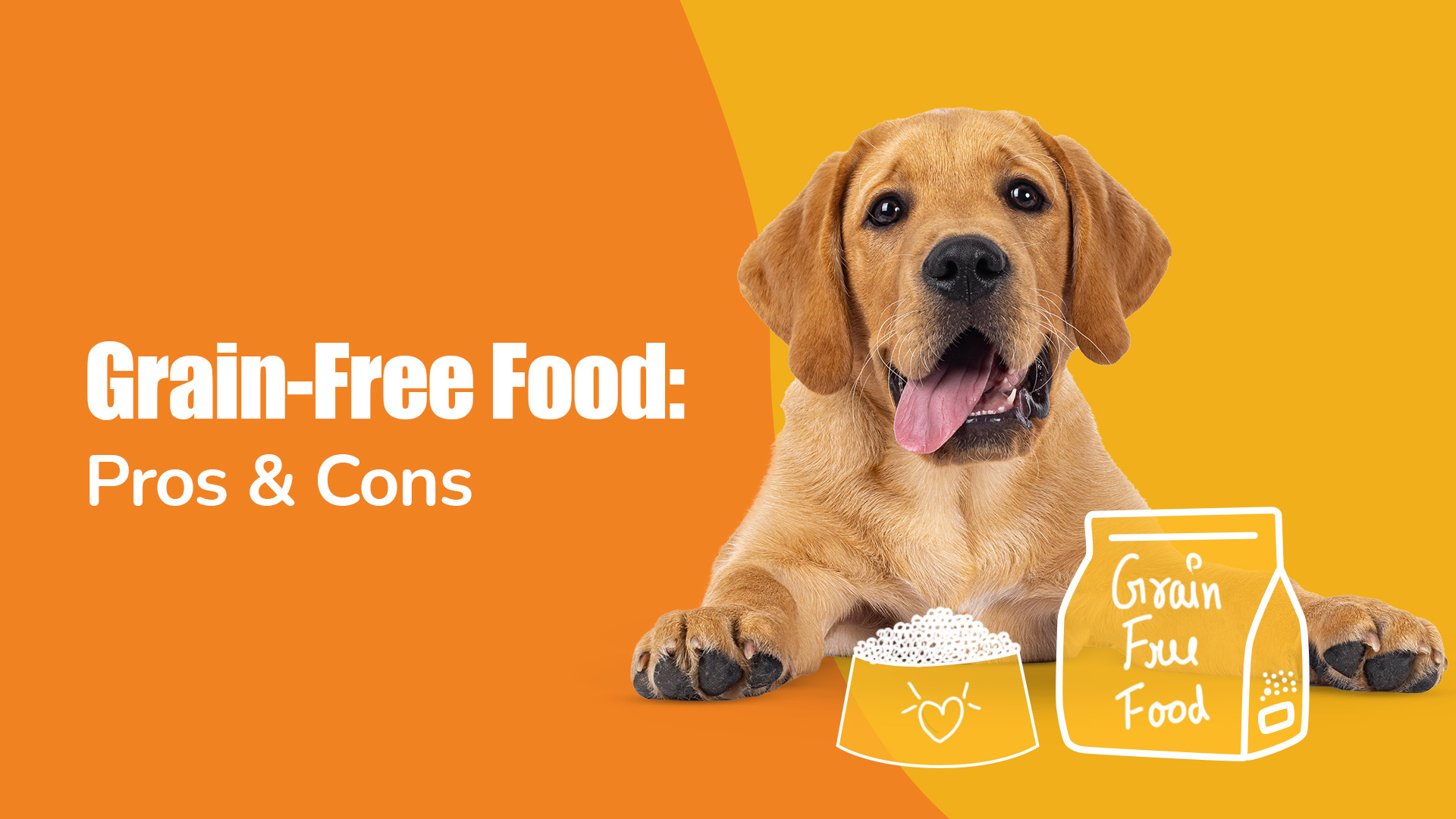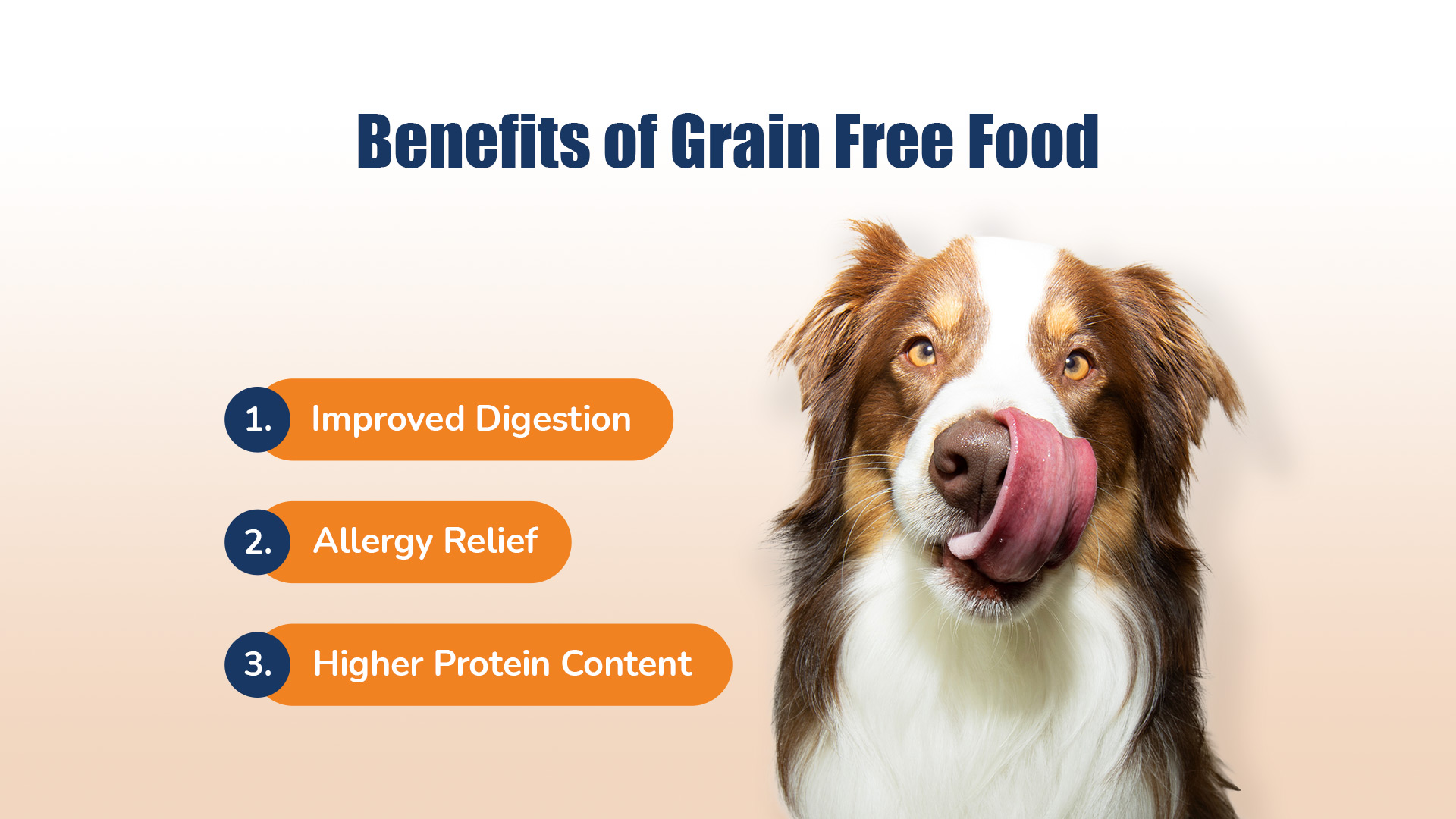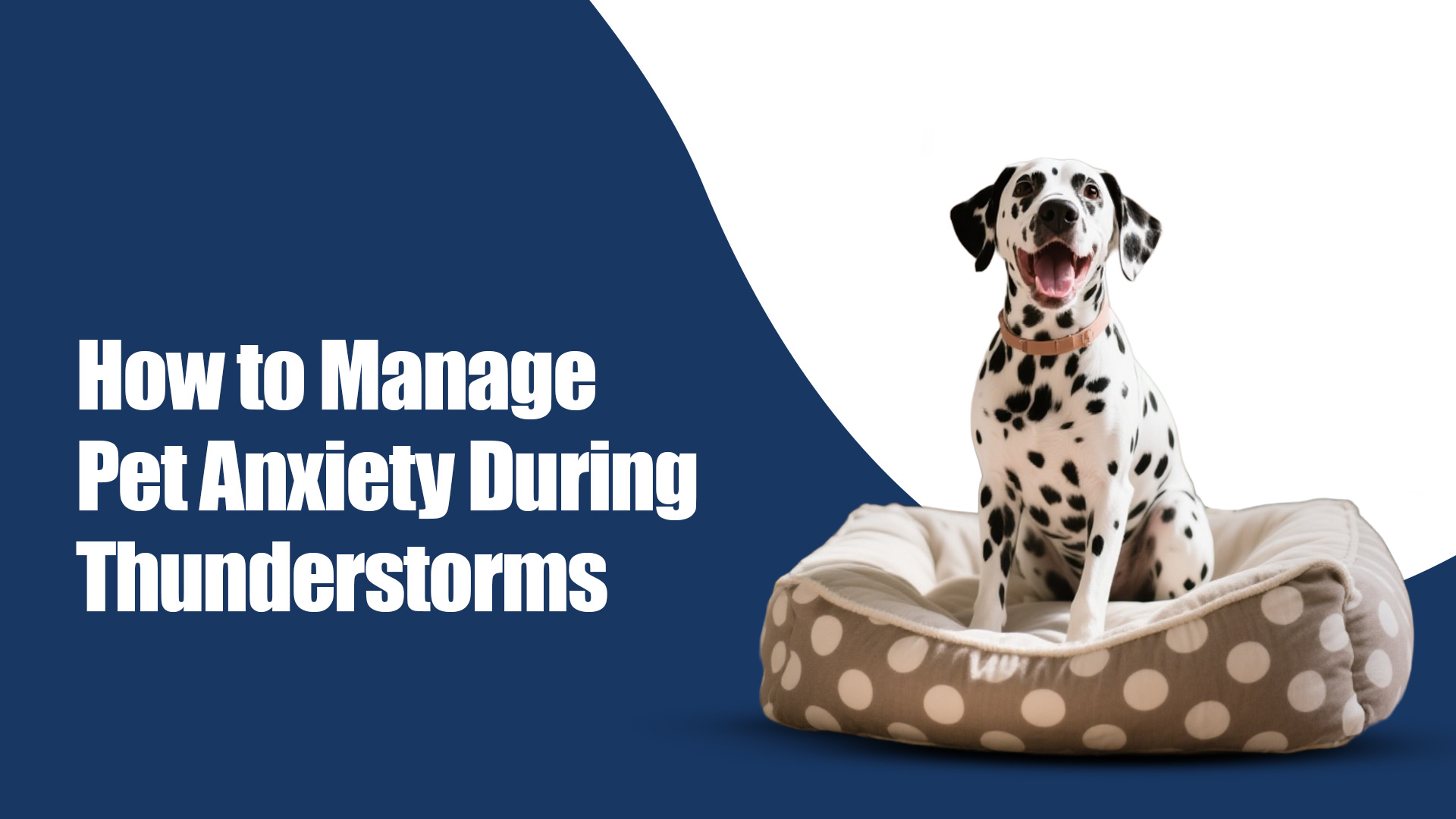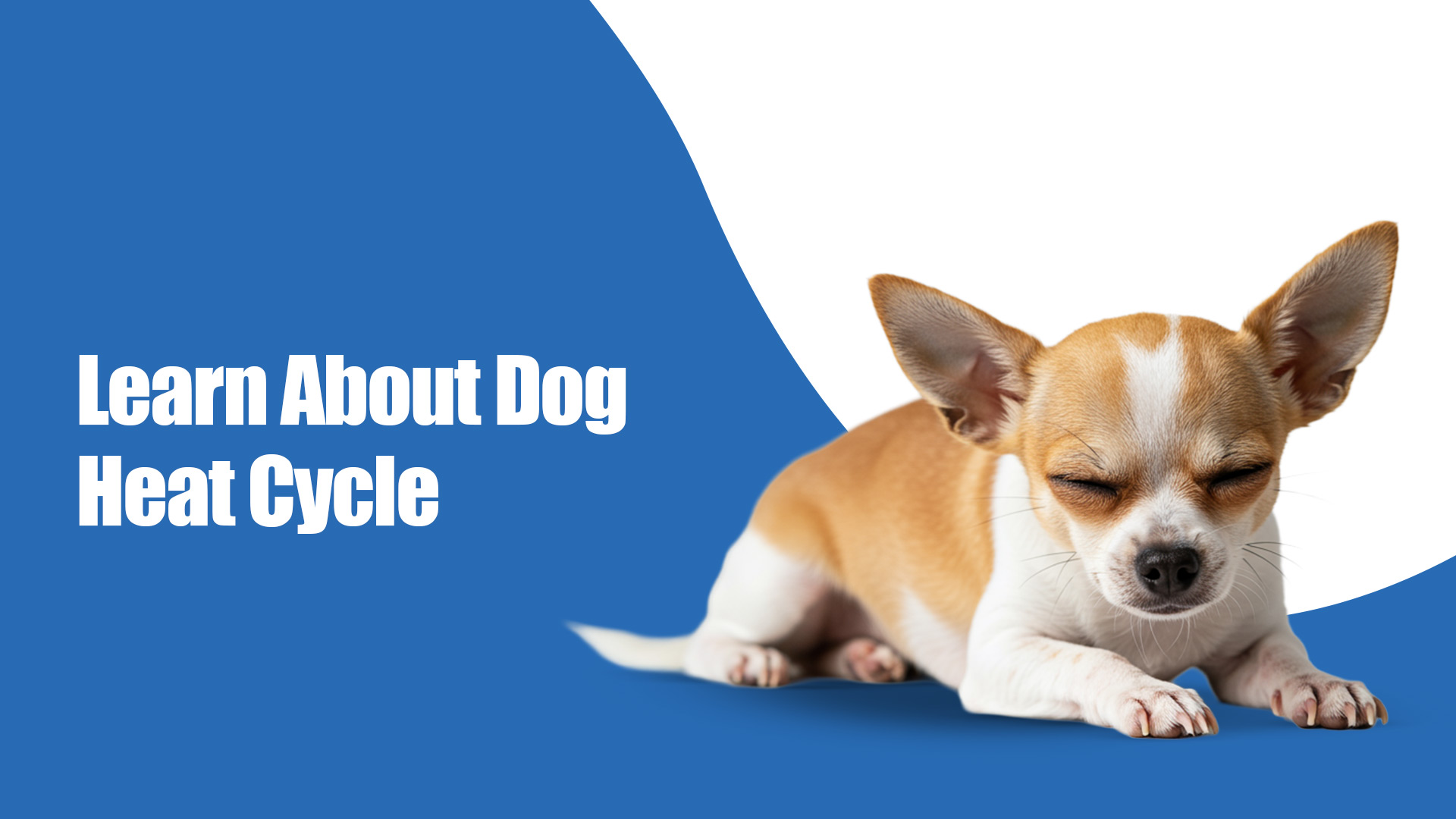Grain-Free Diet for Dogs: Benefits, Drawbacks, and Choosing the Right Food

Choosing the right diet for your dog is crucial for their overall health and well-being. One popular choice among pet owners is grain-free dog food. But is it the best option for your furry friend? This guide will explore the pros and cons of grain-free dog food, helping you make an informed decision.
Understanding Grain-Free Dog Food
What is Grain-Free Dog Food?
Grain-free dog food is formulated without grains such as wheat, corn, rice, and barley. Instead, it typically uses alternative carbohydrate sources like sweet potatoes, peas, or lentils. The concept behind grain-free diets is to mimic a more natural diet for dogs, focusing on proteins and vegetables.
Why Consider Grain-Free Dog Food?
Pet owners often consider grain-free diets for various reasons, including:
- Digestive Health: Some dogs may have difficulty digesting grains, leading to gastrointestinal issues.
- Allergies and Sensitivities: Grain-free diets can help alleviate symptoms associated with food allergies or sensitivities.
- Evolutionary Perspective: Some believe that a diet without grains is closer to what wild canines would consume.
Benefits of Grain-Free Dog Food
Improved Digestion
Grain-free dog food can be easier on the digestive system for some dogs. Grains are often harder for dogs to digest compared to other ingredients. By replacing grains with easily digestible carbohydrates like sweet potatoes or peas, you may see improvements in your dog’s stool quality and overall digestion.
Allergy Relief
Dogs with allergies may benefit from a grain-free diet. Grains such as wheat and corn are common allergens in dog food. Eliminate these ingredients, and your pet will experience reduced symptoms such as itching, ear infections, and digestive upset. However, it’s essential to consult with your veterinarian to ensure that the diet change is appropriate for your dog’s specific condition because your pet can be allergic for more than one dietary ingredients and may require proper diagnosis and treatment. .
Higher Protein Content
Many grain-free dog foods are higher in protein compared to traditional kibble. Proteins such as chicken, beef, or fish are often the primary ingredients. Increased protein can be beneficial for active and high-energy dogs, supporting muscle maintenance and overall vitality.

Potential Drawbacks of Grain-Free Dog Food
Nutritional Imbalance Concerns
Not all grain-free dog foods are created equal. Some may be low in essential nutrients if they rely too heavily on alternative carbohydrate sources. It’s important to choose a grain-free dog food that is nutritionally balanced and meets the AAFCO (Association of American Feed Control Officials) standards.
Higher Cost
Grain-free dog foods can be more expensive than traditional grain-inclusive options. The cost is often attributed to the use of higher-quality ingredients and the absence of inexpensive fillers. While the health benefits may justify the expense, budget-conscious pet owners should be aware of this potential drawback.
Heart Disease Risks
Recent studies have linked certain grain-free diets to canine dilated cardiomyopathy (DCM), a serious heart condition. The exact cause is not yet fully understood, but some researchers suggest that the high levels of peas, lentils, and other pulse ingredients in grain-free foods may play a role. If you’re considering a grain-free diet, it’s crucial to choose reputable brands and consult with your veterinarian to ensure it’s appropriate for your dog.
Choosing the Best Grain-Free Dog Food
Top Brands for Grain-Free Dog Food
Several reputable brands offer high-quality grain-free dog foods. Some top options include:
- Fresh for Paws, grain free fresh food for dogs
- Canine Creek by Drools
- Fresh for Paws
- N&D by Farima
- Fabled
- Taste of Wild
What Makes a Dog Food Truly Grain-Free?
To ensure that a dog food is genuinely grain-free:
- Check the Ingredients List: Look for a diet that lists meat, fish, or poultry as the primary ingredient and avoids grains entirely.
- Look for Certification: Reputable brands often provide certifications or labels confirming that their products are grain-free.
- Consult Your Veterinarian: Your vet can help verify that the food meets your dog’s specific health needs.
Best Grain-Free Dog Food for Specific Needs
For Dogs with Skin Allergies
For dogs with skin allergies, look for grain-free dog foods that include:
- Omega Fatty Acids: Ingredients like fish oil or flaxseed can help reduce inflammation and support skin health.
- Limited Ingredients: Foods with fewer ingredients can help identify and avoid specific allergens.
Recommended Products:
- Hypoallergenic by Farmina (Vetlife)
- Ultrahypo by Farmina (Vetlife)
- N&D by Farmina Grain Free Quinoa
- Taste of the Wild, Smoked Salmon
For Active and High-Energy Dogs
Active dogs require a diet rich in protein and healthy fats. Grain-free options often meet these needs:
- High-Protein Content: Ensure the food lists a high-quality protein source as the main ingredient.
- Nutrient-Dense Formulas: Look for foods with added vitamins and minerals to support overall health and energy levels.
Recommended Products:
Homemade Grain-Free Dog Food Options
Benefits of Homemade Grain-Free Dog Food
Homemade grain-free dog food allows you to control ingredients and tailor the diet to your dog’s specific needs. Benefits include:
- Customization: You can adjust recipes to fit your dog’s health requirements and preferences.
- Quality Control: Using fresh ingredients ensures your dog receives the best nutrition.

Recipes and Tips
When preparing homemade grain-free dog food:
- Consult Zigly Veterinarian: Work with your vet to create a balanced diet that meets your dog’s nutritional needs.
- Use High-Quality Proteins: Include meats like chicken, turkey, or beef, along with vegetables such as sweet potatoes or carrots.
- Avoid Harmful Ingredients: Do not use ingredients that are toxic to dogs, like onions or garlic.
Frequently Asked Questions (FAQs)
1. Are there any risks associated with grain-free dog food?
Yes, some risks include potential nutritional imbalances and links to heart disease. It’s important to choose high-quality brands and consult with your veterinarian.
2. How do I transition my dog to a grain-free diet?
Gradually transition your dog by mixing the new grain-free food with their current food over 7-10 days. Monitor your dog’s response and consult your vet if needed.
3. Can grain-free dog food help with my dog’s allergies?
Grain-free dog food can help alleviate some allergies, particularly if grains are a known allergen. However, it’s essential to identify the specific allergens affecting your dog.
4. Is grain-free dog food more expensive?
Yes, grain-free dog food is generally more expensive because it uses higher-quality ingredients and does not contain cheap fillers.

















The information below is required for social login
Create New Account